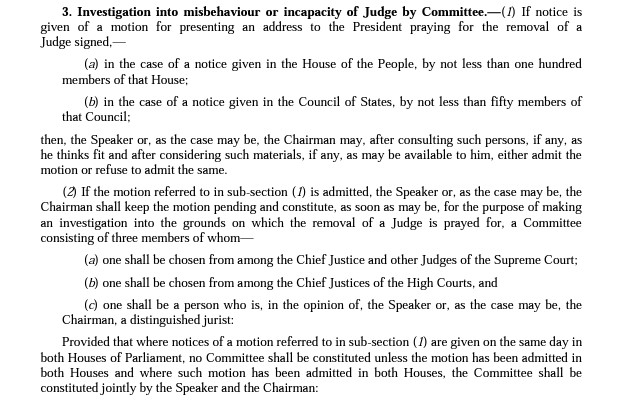A video circulating on YouTube alleges that Prime Minister Modi has penned a strongly worded letter to Chief Justice of India Chandrachud. In this letter, the PM purportedly criticizes the CJI for focusing selectively on Manipur and Article 370 issues while neglecting other matters, such as instances of women’s atrocities in Rajasthan, West Bengal, and others. The video also claims that in this alleged letter, Modi accuses the Chief Justice of displaying bias in his views on various issues and goes as far as stating that he has formally requested President Murmu to terminate the Chief Justice from his position. Through this article let’s fact-check the claim made in the video.

Claim: Modi has penned a strongly worded letter to Chief Justice Chandrachud, criticizing his perceived bias on various issues.
Fact: There are no records of Modi writing a letter to the CJI, wherein he condemns the CJI for displaying bias and selective criticism. Likewise, there are no accounts of Modi requesting the President for the dismissal of the CJI. It is improbable that the Prime Minister would correspond with the President without abiding by the established due process, given that an impeachment motion must secure a special majority in both houses of Parliament. Hence, the claim made in the post is FALSE.
The viral video claims that Prime Minister Modi vehemently criticized the Chief Justice of India in a letter, accusing him of partiality on several matters. Nevertheless, our investigation could not uncover any news articles or reports confirming the existence of such a letter sent by the Prime Minister. If, indeed, the country’s Prime Minister had penned such a letter, it is likely that the media would have covered it extensively. However, we have found no such reports to corroborate this claim.
Additionally, the video emphasizes that Modi had made a request to the President to dismiss the Chief Justice from his post. It is important to highlight that while it is the President’s authority to issue an order for the removal of the Chief Justice, such an action can only be taken following the presentation of an address by Parliament. This address must garner substantial support, requiring a special majority in each House of Parliament, meaning a majority of the total membership of that House and a majority of not less than two-thirds of the members of that House who are present and voting.

The procedure governing the removal of a Supreme Court judge is stipulated by the Judges Inquiry Act of 1968, specifically through the process of impeachment. This procedure is predicated on two grounds: proven misbehavior or incapacity. Consequently, the assertion that Modi sought the President’s intervention for the Chief Justice’s removal implies that it is an unsubstantiated claim, as there has been no recent parliamentary discussion on the impeachment of the Chief Justice, and it is improbable that the Prime Minister would write to the President without adhering to the established due process.
Moreover, there have been no news reports concerning the impeachment of Chief Justice Chandrachud. If any such discussions had occurred within political circles, it is likely that the media would have covered them, yet we have found no such reports. Additionally, there is no indication of strained relations between the Prime Minister and the Chief Justice. During their last public appearance together at the Independence Day event, the Prime Minister commended the Supreme Court on several matters.

To sum it up, Modi did not write a letter to Chief Justice Chandrachud criticizing him for selective criticism



